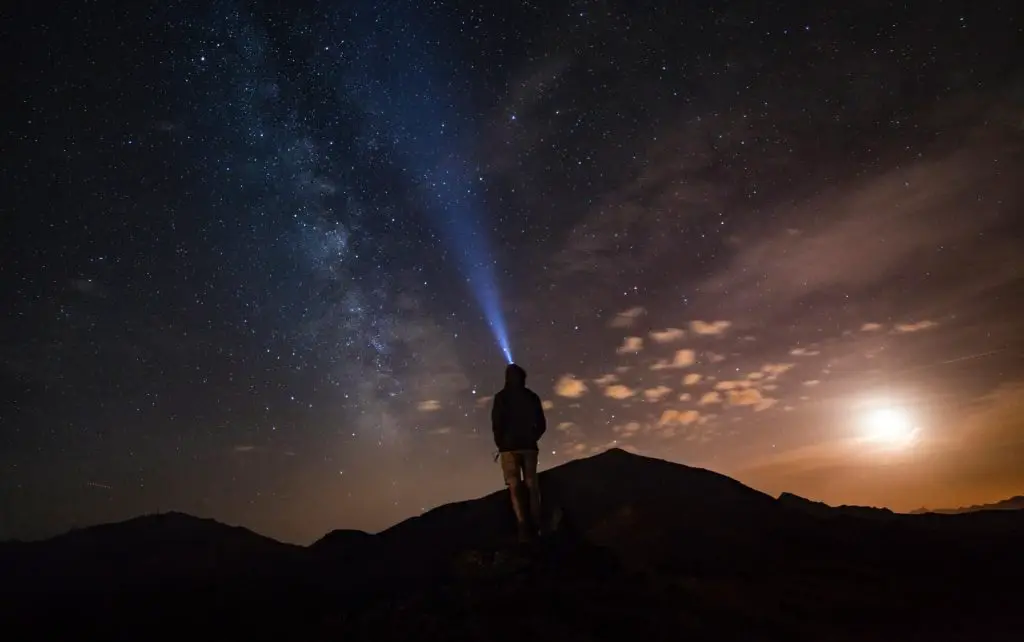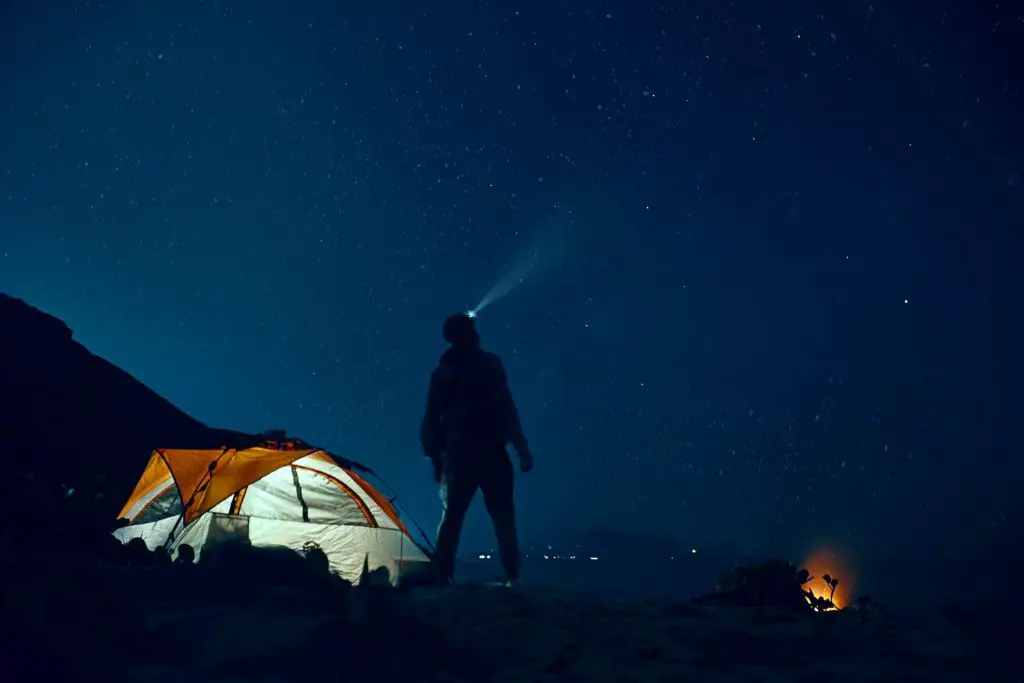
If you’re considering going on a night hike and need a headlamp, one of the most common things to wonder is how many lumens do you need for your night hike?
For night hikes you want to bring a headlamp with a lumen rating between 100 and 200. This will allow you to see the trail and look into your bag with ease.
While lumens are the most prominent number on headlamp boxes, they are a bit deceiving. There are many other things you should consider when looking into a headlamp such as beam distance, battery life, and more. Let’s go over things you should know about before you make that headlamp purchase so you can hike at night on a well lit trail!
What to know about lumens for hiking
When you are shopping for headlamps, the number that will stand out the most on the box is the lumen rating. This naturally leads people to believe that the higher the lumens the better the headlamp. However, this is not true and there are a number of things to look out for when deciding on a hiking headlamp.
What are headlamp lumens?
Lumens are the units used to measure how much light is coming from a specific light source. Lumens can range from as low as 5 lumens to as high as 500. The number that is listed for lumens on each manufacturers box can be misleading. Typically this number is the max output of light for the headlamp, however most headlamps will begin to dim as more battery is being used.
When looking at headlamps you want to get a headlamp with at least a 100 lumen rating for night hiking. This will be bright enough to illuminate the trail and get you safely to your destination. Some headlamps also have dimming features so you can dim your light if you have a full moon. This will save your battery and still provide you the ability to light up the trail.
What’s the difference between headlamps?

If you’re at the store, looking at the many choices for headlamps can be daunting. All the headlamps pretty much look the same, but why is one headlamp $30 and another $120? There are a few key differences between the headlamps that can help you make your decision
Light Output
The biggest difference between the headlamps is the amount of light they output. This is the lumen rating listed on the boxes. The higher the number, the brighter the headlamp at max output. However, what you want to look for is the average output for the headlamp as the headlamp will only be at max output early on when you first turn it on. The light will continue to dim over time as you use more battery life.
Beam Distance
The next biggest difference for headlamps is how far the headlamp can project its light. Manufacturers list this on the box as the beam distance. The larger the number, the further the headlamp can emit its light. This is important because you want to be able to see far up ahead during your night hike. It won’t do you any good if you have 500 lumens and the light can only emit 2 meters.
Battery Life
The third biggest difference when looking at headlamps is how long they will last. Look on the box for the expected duration for the headlamp. While some headlamps have crazy high lumens, they will likely burn a lot of battery and thus have a lower battery life duration. Find something that lasts at least 8 hours. While you can always bring extra batteries, its always better to have the main batteries last a very long time.
These three key differences help separate the various pricing tiers for headlamps, but there are also some distinct features that you should look for that are must-haves on headlamps. These features will make your life much easier during your night hikes and camping trips.
What features should I look for in a headlamp?

Now that you know the main differences between the specs for headlamps, lets go over three main features you should consider.
Light Modes
The first feature you should consider is if the headlamp has various light modes. The first mode your headlamp should definitely have is the ability to dim. Dimming the light allows you flexibility to adjust the light based on your needs on the trail, at camp, or in your car. This will help with saving battery life.
The next light feature your headlamp should have is the ability to strobe. This will help you in the event of an emergency and provide a strobing light. Another light feature you should look for is if the headlamp offers a red light mode. Red light mode provides you with light to see what you are doing, but helps your eyes because the light isn’t as impactful on your pupils.
Tilt and Straps
A feature that I didn’t realize existed until I saw my friend’s headlamp was the ability to tilt the headlamp. Some headlamps come with the ability to adjust the tilt angle of the light. This is great as you will be able to change where the light is emitting to as you are hiking.
Another feature you might want to consider is if the headlamp has a top strap. This top strap will sit on top of your head and lessen the load on your forehead and helps keep the headlamp in a more stable position.
Battery Types
The last feature you want to look for is if the headlamp has a built in rechargeable battery or if you need to buy your own batteries. Some headlamps now have a rechargeable USB battery. This can come in hand if you are already used to bringing an external battery. Now all you need to do is bring a USB cable instead of a few extra batteries. This can help you save on weight and space.
What hiking Headlamp Should I Start With?
After many years of hiking and multiple times where I’ve hiked much later than I planned for, I have been able to rely on these two headlamps. These headlamps have been recommended to me by many other hikers and have served me well hiking in places like Yosemite and even when camping in Iceland!
How bright should your headlamp be for hiking?
Whether you’re planning a night hike or looking for a headlamp to pack just in case, how bright should it be?
A hiking headlamp should be at least 50 to 100 lumens, which is bright enough to illuminate the trail at least a few meters in front of you and be wide enough to cover the trail. This will allow you to see where you are going and any obstacles on the side of the trail.
Is 100 lumens enough for camping?
If you’re looking for a headlamp for the times you are in camp, then 100 lumens should be more than enough for your needs. With this many lumens you will be able to easily see around you to setup camp, cook, and more.
When you are at camp you can also dim your light to preserve your headlamp’s batteries. Another option you can do is use the red light mode to not blind yourself or your friends at camp.
Final Thoughts
Picking headlamps for night hiking can be tricky at first. There’s a lot of specs to look at and many different features to consider, but if you know the main differences and key features to look for then you can quickly narrow down your choices.
Headlamps have continued to evolve and have brighter lights for longer. Hiking with a good headlamp will allow you to hike hands-free and enjoy the beautiful trail at night with less worry.
